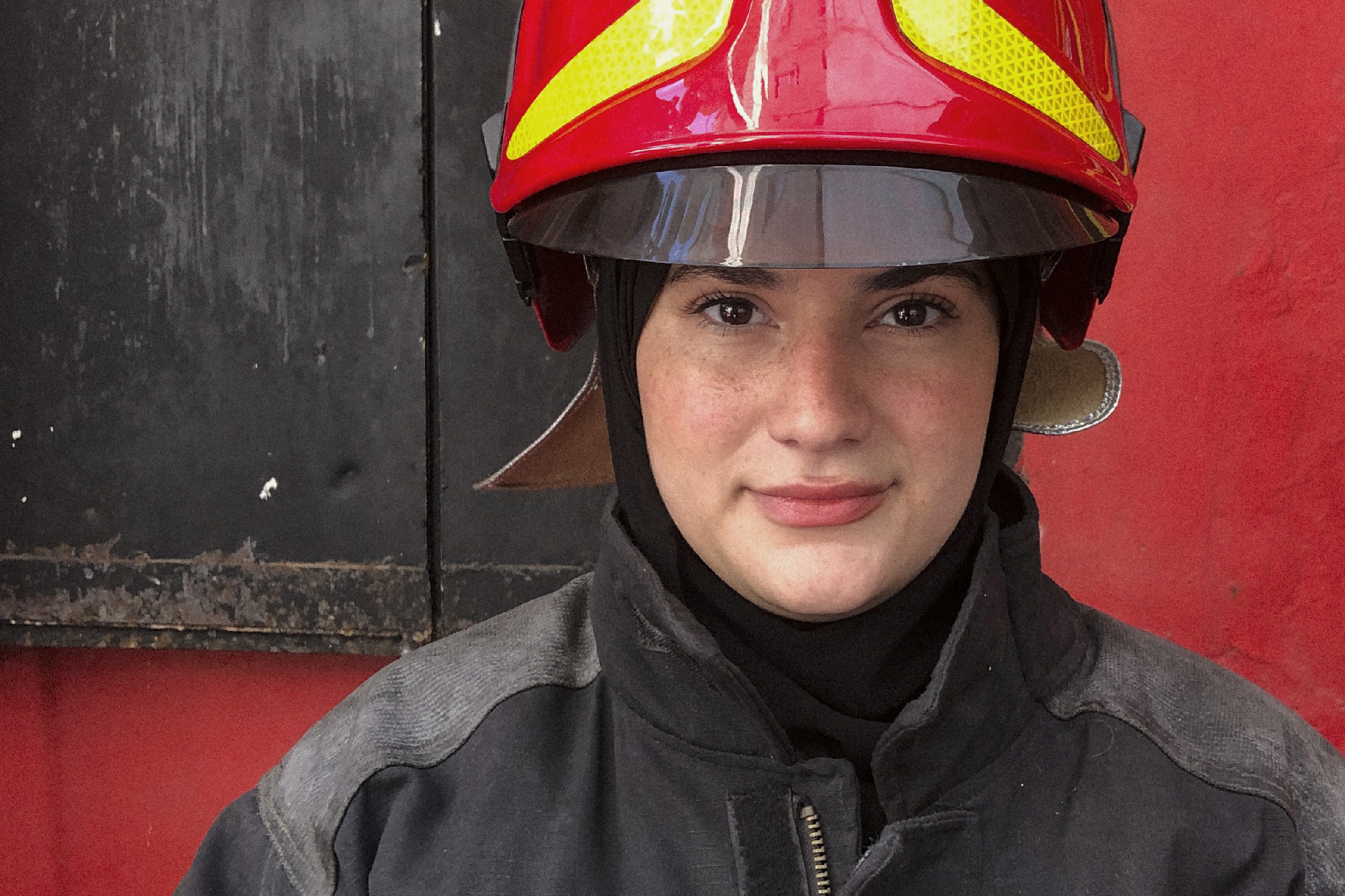
On a hot September day we are standing at the entrance of Bourj Al-Barajneh camp in Beirut. There are small stores everywhere, often just garages, selling food or tools, in one store there are colorful songbirds. We see men with long pants and women with headscarves, children, scooters, occasionally cars. The latter often make a u-turn , because the roads in the neighborhood are narrow and only a few streets are wide enough for cars. Also, you have to watch out for fast motorcycles and scooters and jump to the side if necessary. The streets are lined with gray houses, some of them several stories high, and spanned by a low-hanging tangle of power and water lines. People eye me curiously, some smile - we stand out, of course - and I smile back cautiously.

Just two left turns on foot bring us to Alsama School. Together with the students of the "professional class" we will create a magazine within two weeks, which will feature their own stories and photos of life in the camp. This year's team consists of the two founders of the project, Erol (photographer) and István (designer), as well as Sara (video journalist from Beirut) and me as a newcomer to the team, since I am a photography student currently doing my internship with Erol. A few days before, we already got to know the 14- to 19-year-old students. As homework until the start of the workshop, they were each supposed to find two topics from camp life that they wanted to report on in the magazine.
It starts today, it's 31 degrees and it won't cool down in the next two weeks. We have the choice between a windowless 15 square meter classroom or a larger room under the roof, which has windows but is hot - we decide on the former. After the round of introductions we notice that everyone is very motivated and looking forward to working together over the next few days.
Erol starts with some basics on photography (perspective, shot sizes, portrait and landscape format) and then sends the students to the camp to take their first photos. I accompany two of them - Tarif and Abdallah - through narrow alleys with puddles on the ground and through wider streets. Left, right, left again, alone I would never find the way back and I have trouble keeping up with the pace with which the two run purposefully to a covered soccer field to photograph the field, the children and the soccer from different angles. I watch and give them a few hints in English here and there.
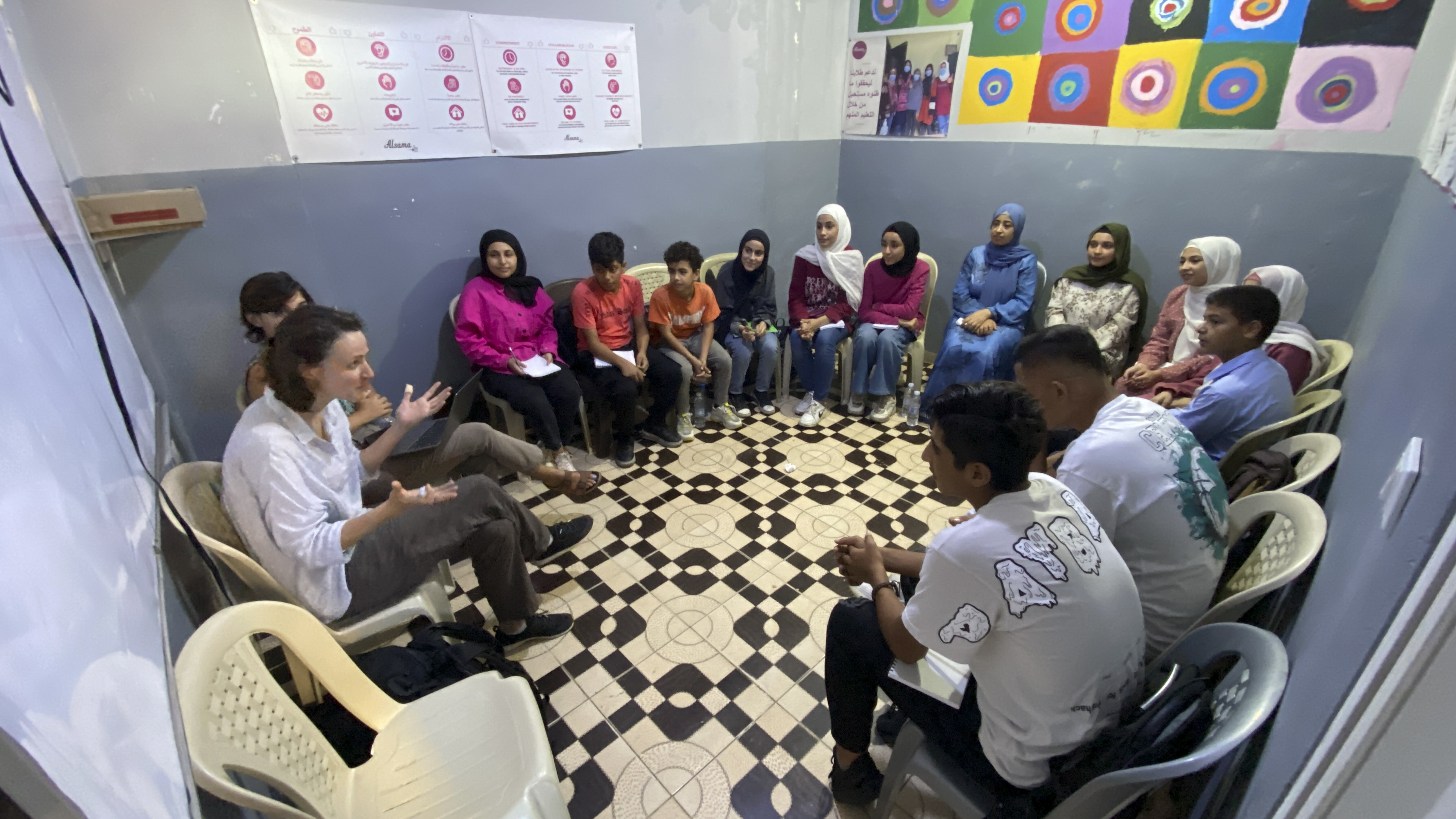
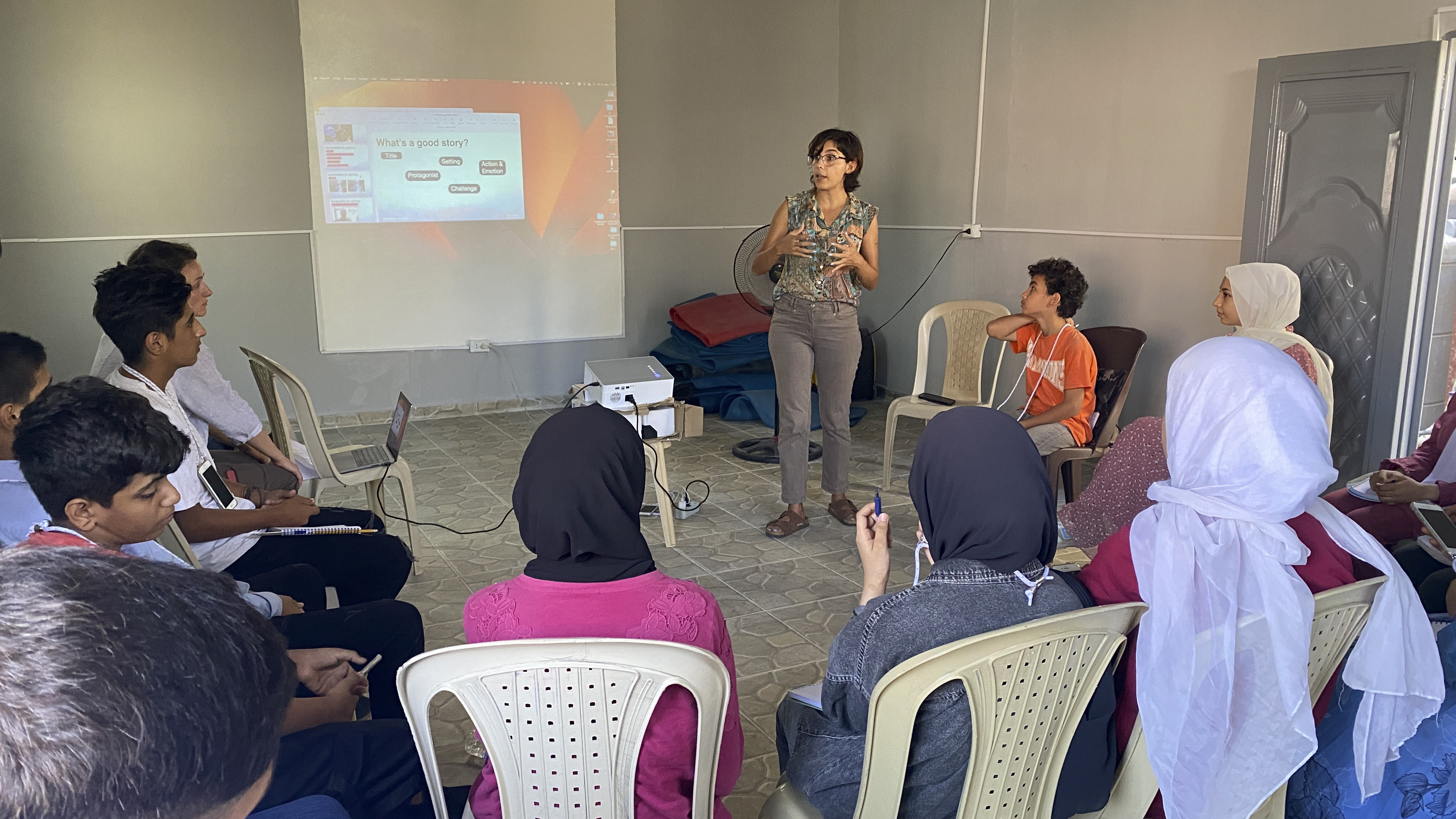
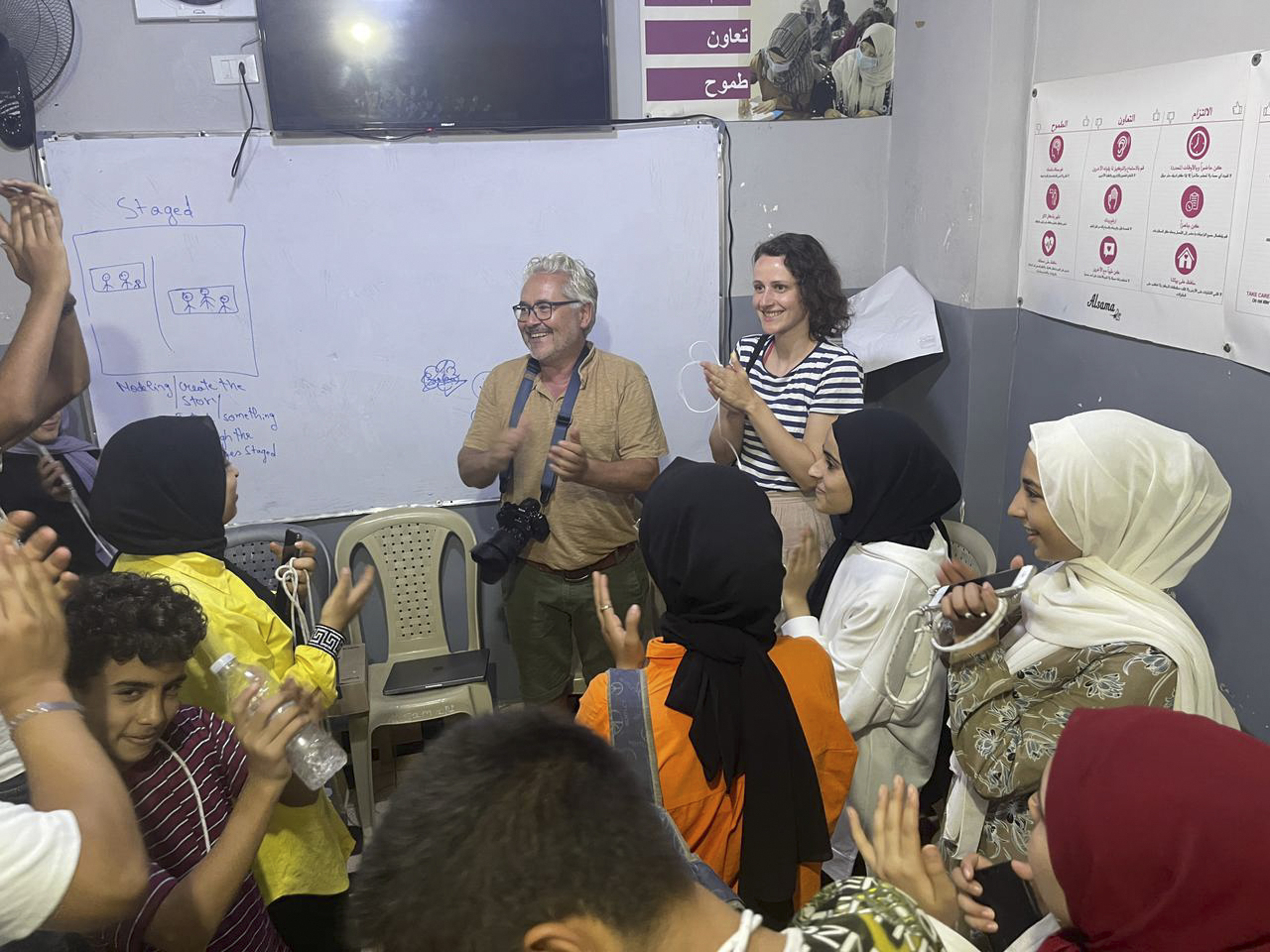
We all use smartphones and quickly transfer the photos to the laptop to discuss them after the shoots. It’s exciting to see which images the students find interesting and important and which are irrelevant to them. The week passes quickly with photo exercises, feedback rounds, input on storytelling from Sara, finding protagonists for the stories, discussing the stories, writing exercises and again photo exercises. We use the lunch breaks to share our observations from the students over Coke and sandwiches and to discuss the progress of the project. By the end of the first week, some stories are very mature, while others need much more work.
At the beginning of the next week I walk more routinely through the streets with the small teams, only sometimes they pull me aside from a motor scooter or warned of a construction site, when my gaze gets stuck somewhere up there by the power lines or in the bustling fruit and vegetable market. Communication is also better now: the students, some of whom are very shy, dare to ask questions, not only about photography, but also about me, where I live or what I think of the camp. I also ask them questions about what this or that means, in addition to my photography tips, and they give me very open-minded information.
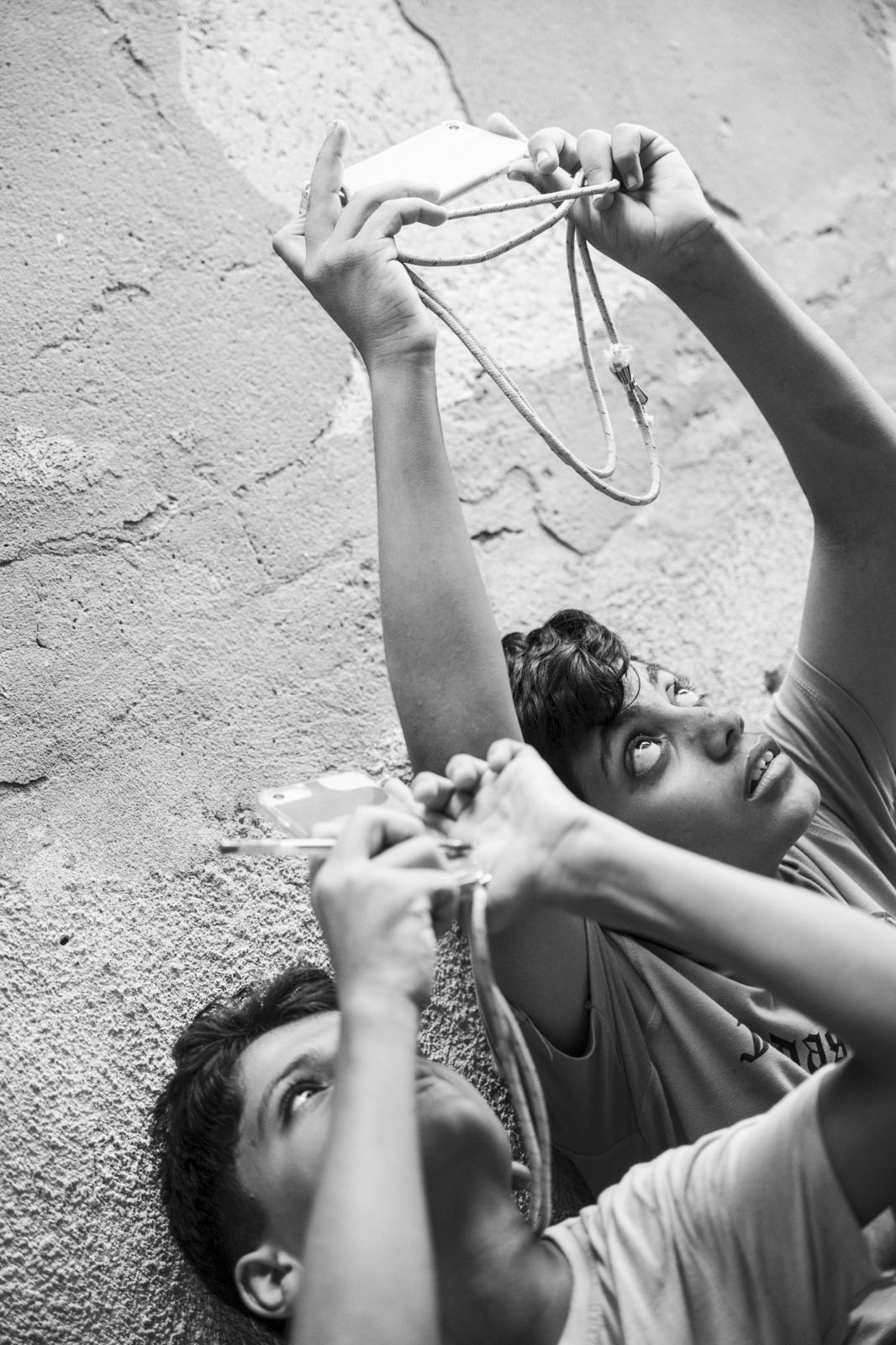
István arrives at the start of week two: he explains how a magazine is structured and what makes a good cover page. In addition, he begins with the layout and starts to insert the first finished stories. The topics that the youth work on are varied: they are about special personalities in the camp, Syrian food, hidden gardens or the narrow alleys. They are now also beginning to understand the importance of showing their perspective on their lives and surroundings. Mariam tells me that she likes living here because so many people live here that you are never alone, a completely new perspective of the camp for me. In general, we learn a lot about what moves them, for example, that some of them are passionate about playing cricket, that the school gives them self-confidence, but also that there are sometimes conflicts between Syrian and Palestinian refugees.
The stories are slowly taking shape, but almost everywhere the final touches are still missing, be it an opening photo, a part of the text or - due to the lack of a protagonist - we have to quickly look for a new topic. Each of us tries to support our students and to respond to them individually. On Wednesday evening we have almost all the raw material ready, only Amouna needs a little more time because she is still drawing a picture for the back cover. Since we have to print on Thursday noon at the latest, we have a long evening ahead of us: István and I layout, Erol finishes editing the photos, Sara puts finishing touches on the texts. At half past two in the morning we decide to get some sleep and split up for the next day: István and I finalize the magazine and send it to print and Erol and Sara go to camp and give the class some more input on social media posts.
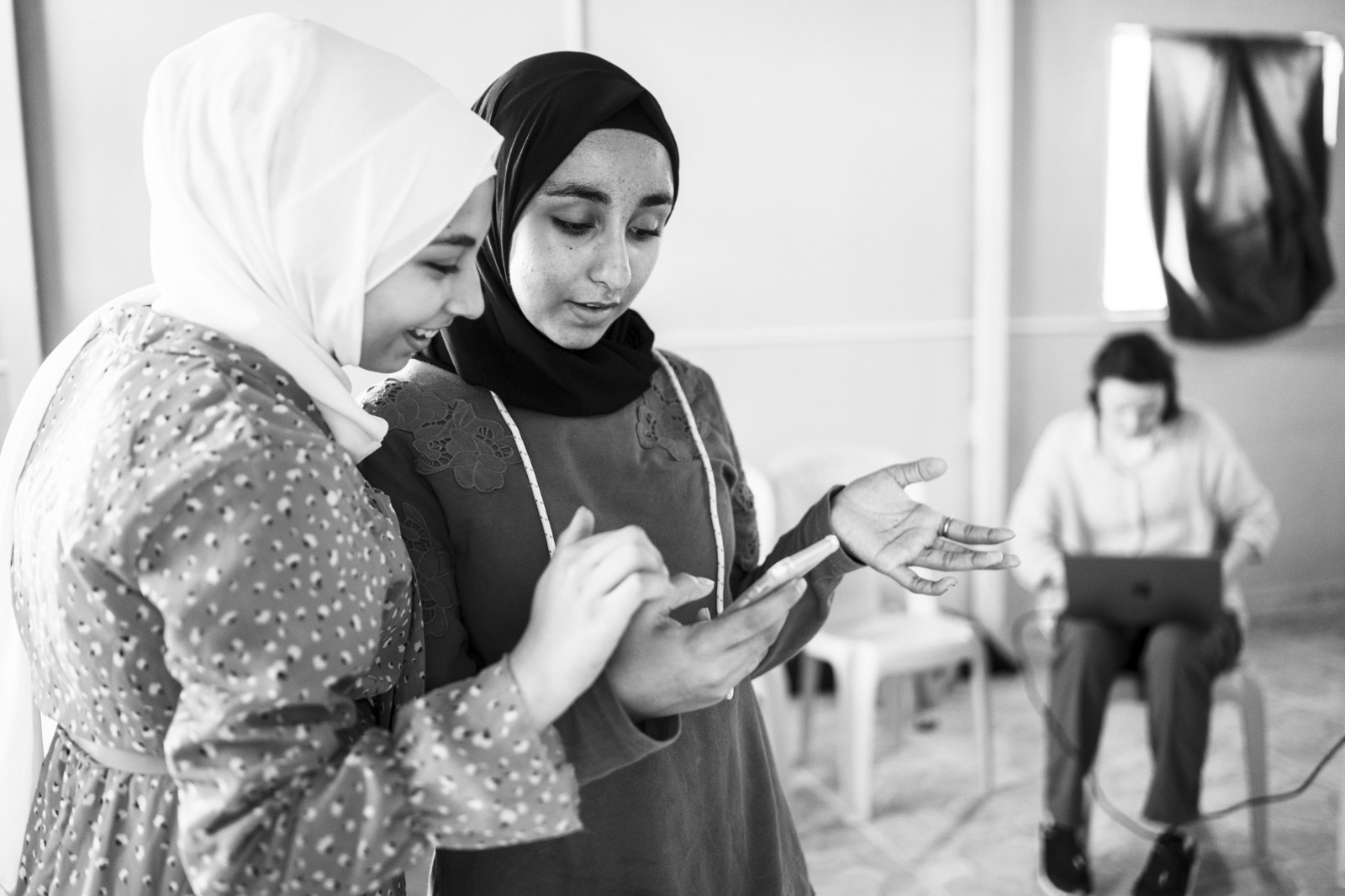
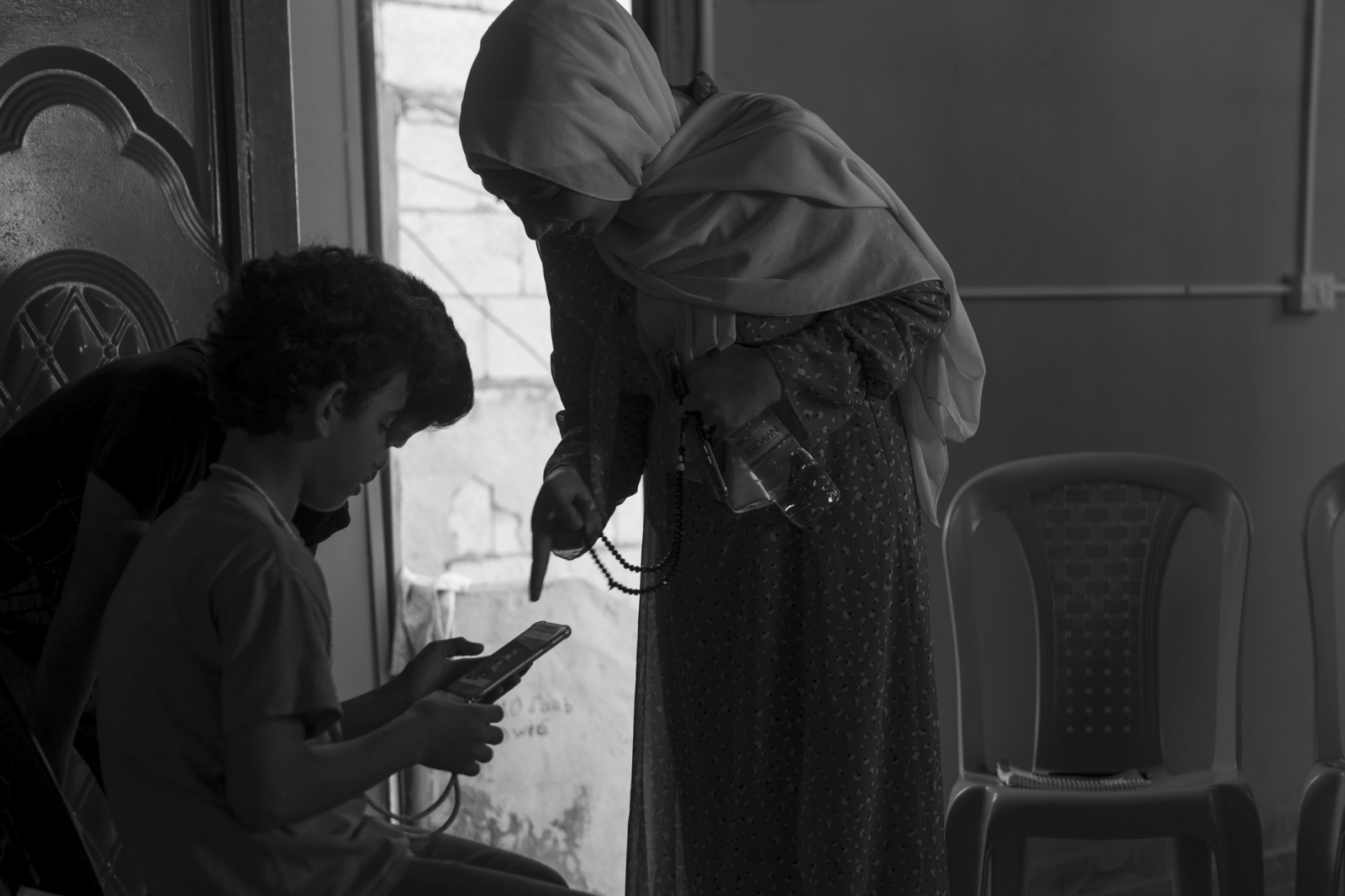

On Friday we leave for camp with the printed magazines. We are here for the last time and I try to take in everything again with all of my senses so that I can tell about it at home. We then ask our students to leave the classroom so that we can attach the finished magazine pages to the walls in a row next to each other as a surprise; there is barely enough room and the whole action has something solemn about it. When we invite the class in, everyone is amazed at what they have accomplished in such a short time. They whisper, laugh, point their fingers at their articles, take pictures. We discuss story after story, each ending with a thunderous applause.
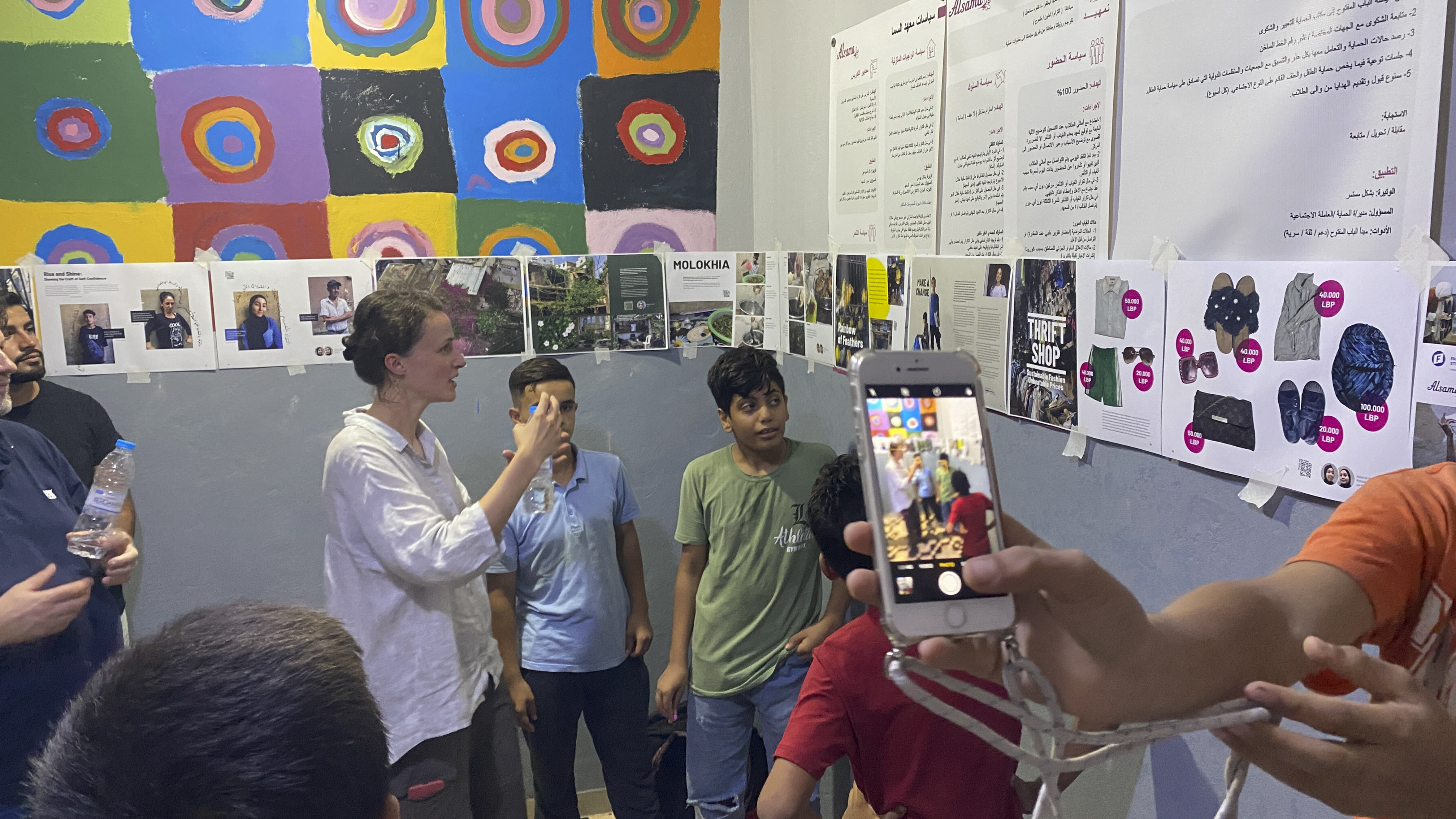
Saturday afternoon is the presentation at the office of Friedrich Naumann Foundation, the project's sponsor. The students are dressed up and some of them are very nervous. Each of them is allowed to go on stage and present their article in front of all the project partners, the teaching staff and other interested people. They also answer any questions that arise with bravura and sometimes tell fun facts about the creation of the article. Applause accompanies each of them off the stage and you can tell: they are relieved, proud and at the same time happy that it's over - just like us. After a few farewell photos, we stand outside and wave to them again before they get into the minibus and drive home.